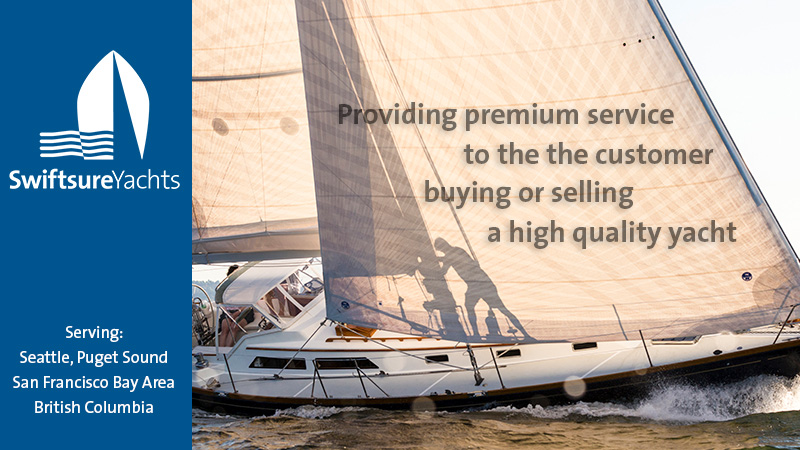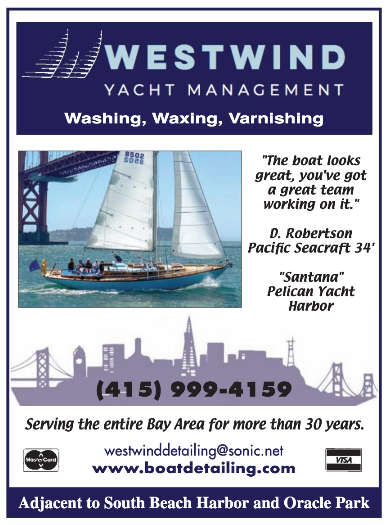
Wind Versus King Tides at the Corinthian Midwinters
The rain stopped, the clouds parted, the sun shone, the wind blew and the king-tide, mountain-runoff-reinforced current ripped through the Bay, leaving most racers in the Corinthian midwinters wondering if they would ever finish a race against the ebb. Despite relatively light winds predicted for Saturday, the race committee made the bold choice of sending the fleets across the Slot, through the swirling whitewater rapids and practically surfable standing waves. Magically they were right, and most boats finished the race.
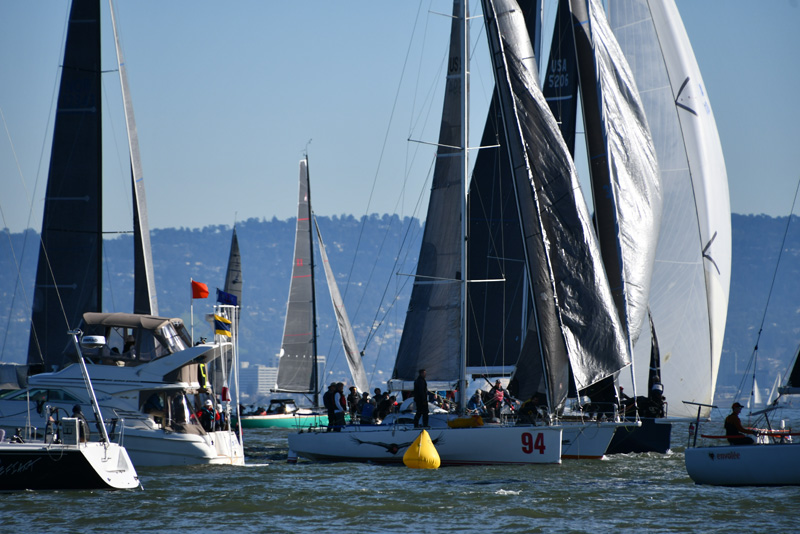
There were wind holes, eddies, bold current lines and puffs that somehow combined to allow most boats to move forward. Aboard our Sabre 38 Finistere, we spent what felt like an hour in a race with the stationary Sutro Tower. A slowly building westerly and final attainment of the Cityfront threw us and others a lifeline to round Fort Mason buoy. We thought they were crazy to send us that way, but it was a long but perfect course.
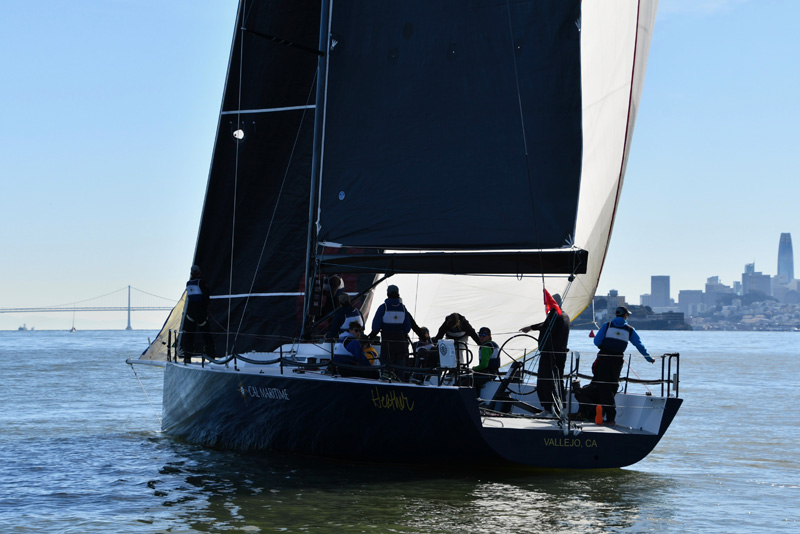
The muddy brown water pouring out of the Delta was littered with logs and other flotsam and jetsam, adding one more navigational hazard to the potholed race course.
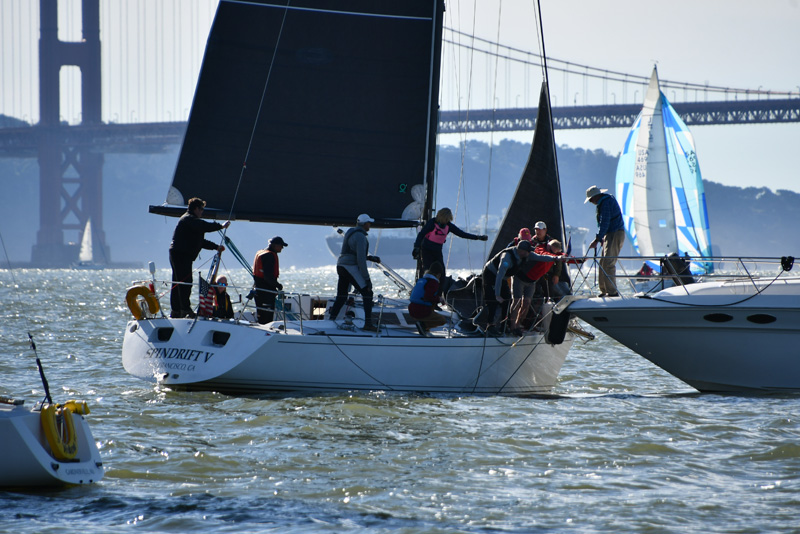
If you were sitting on a park bench the day might have felt chilly, but geared up for racing and working the boat the temperature was ideal. Sunglasses and sunscreen were the order of the day. The Saturday evening party with band, buffet dinner, and a boisterous, social crowd was a reminder of pre-pandemic race parties.
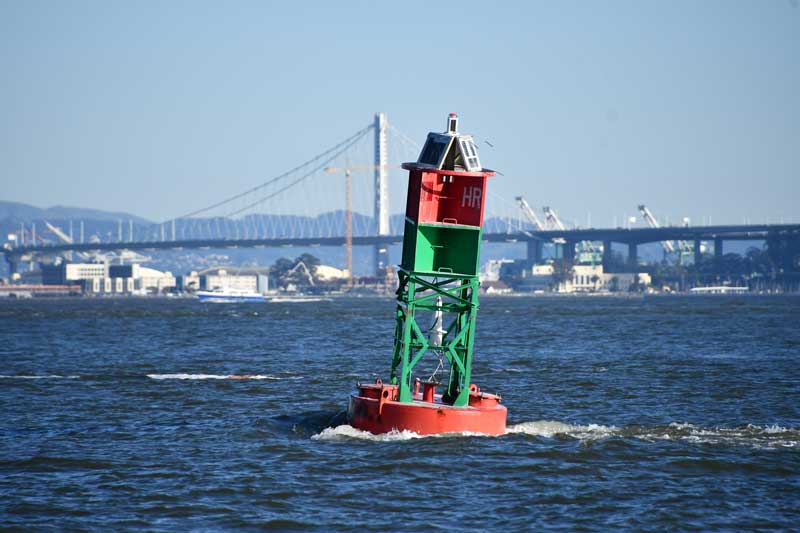
The forecast for current on Sunday was similar but, thankfully, more breeze was forecast to help everyone duel with the current and one another. Another downcurrent, reaching start to a set mark off Little Harding before a turn to weather and a long beat to YRA mark #19, R “8” in the North Bay, once again had us questioning the wisdom of the race committee. Getting through Raccoon Strait in the lee of north winds blowing over Tiburon seemed questionable. Once again it was a great call. Our wisdom has always been in question.
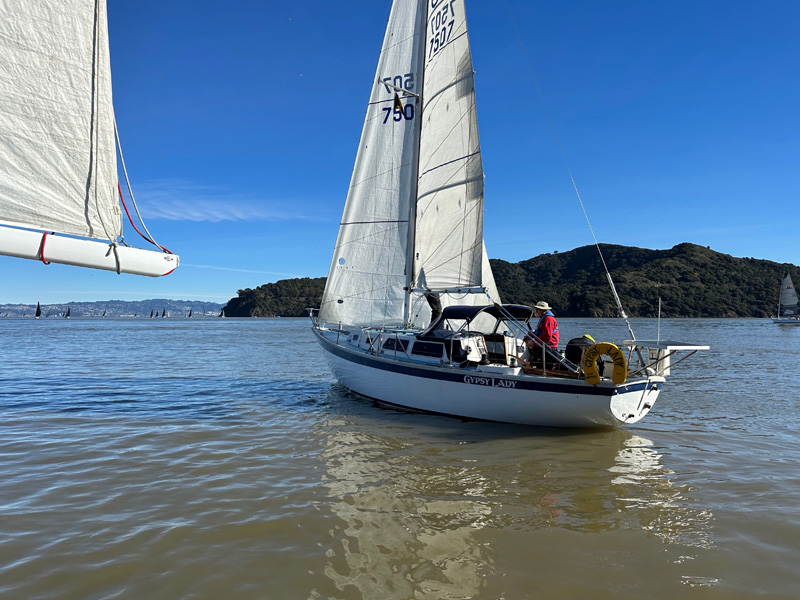
There were moments in Raccoon Strait when emerging on the east side looked darn near impossible. Fortunately, our “back-of-the-pack” position gave us a motivational view of the success of others. Everyone persevered by latching onto whatever puffs came by and eventually found some steady breeze that overcame the relentless ebb that was conspiring against us all.
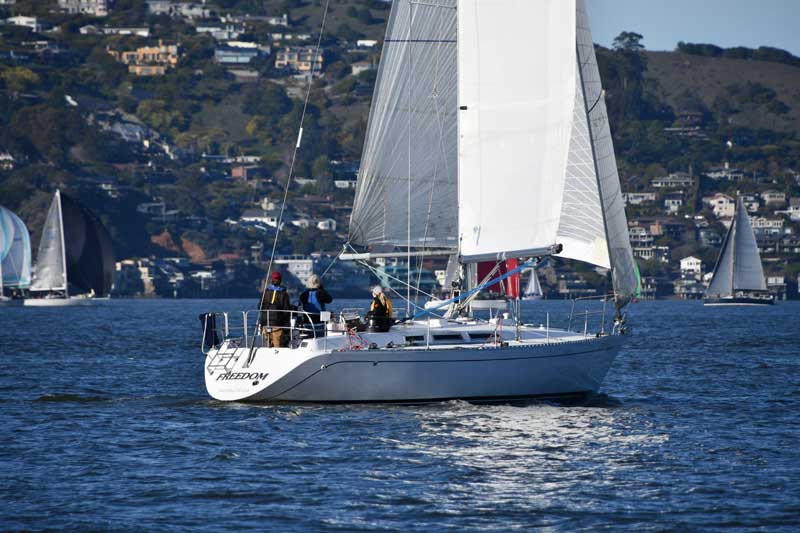
As predicted, the wind did pick up later on Sunday afternoon, making finishing the course a breeze — as long as you didn’t break anything. The big sails that felt good at the beginning of the day were now overpowering, and current became more of an afterthought as the wind demanded more attention. We’d show pictures from the final beat but our hands were full!
The results from the two-weekend, four-race, one-throwout series show a lot of ties in each class. Names at the top of the class lists are Farr 52 Zamazaan, Azzura 1000 Outsider, Custom Frers 40 Jeannette, Sabre Spirit Rhapsody, Express 27 Salty Hotel, Mull/Nash hybrid Arcadia, Worth 40 Freedom and the Tartan Ten Topgallant. That all looks good now, but those places are far from secure. It will all get settled in February.
The king tides were powerful but the wind won. We hope the weather is as next month. Full results here.
Ashby Shoal Lights Up the Bay at King ‘Low’ Tide
On Friday we let the cat out of the bag… There are people who might refer to this spot as “secret,” but too many people know about it for the secret to remain fully intact. We’re referring to Ashby Shoal, the sand bar that lies just off the Emeryville Marina and has caught more than one sailor off guard when veering too far out of the channel. This weekend the shoal was clearly visible, and was once again the staging ground for what is possibly the Bay Area’s most unique party.
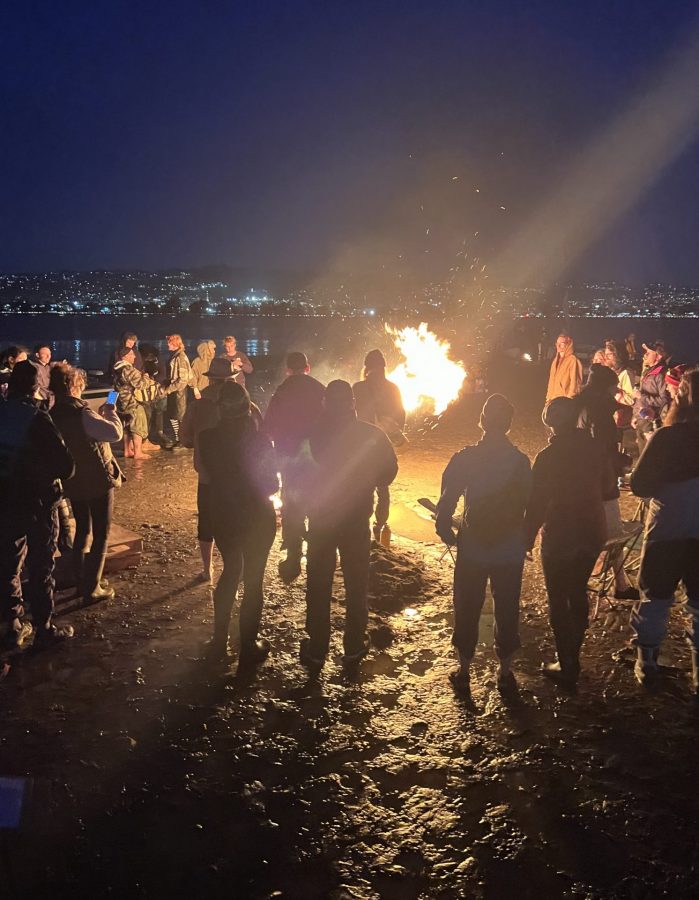
One group of partygoers, Michael McAnaney and Hardy Chambliss and their sons Nash, Fletcher and Atlas, joined the festivities via kayaks and paddle boards, leaving from Emeryville Marina Park. The three boys were the only kids on the temporary beach, and Michael says, “They had a blast exploring!!”
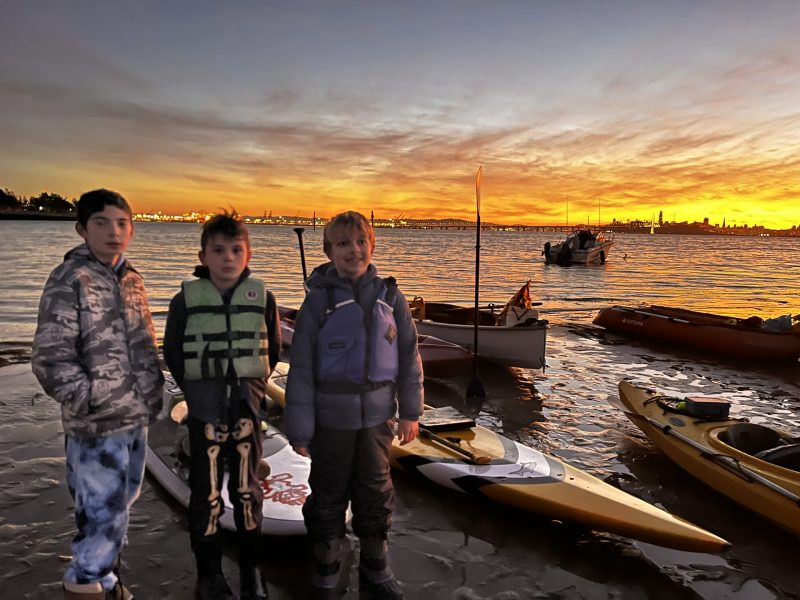
And while they used paddles to reach the shoal, all five are also sailors.
“Hardy is a very experienced sailor,” Michael wrote, “and I am in sailing school at Club Nautique.”
Michael is working toward daysailing on the Bay with his family, and he wants his kids to learn the skills as they grow up. Though he doesn’t own a boat yet, and Hardy owns a powerboat, both are members at Encinal Yacht Club, and Hardy’s kids are in EYC’s Junior Sailing Program.
“Hardy found out about the Shoal party from your article, and he is a Latitude 38 reader. So thank you for publishing it because it prompted us to have a great dad’s adventure!!”
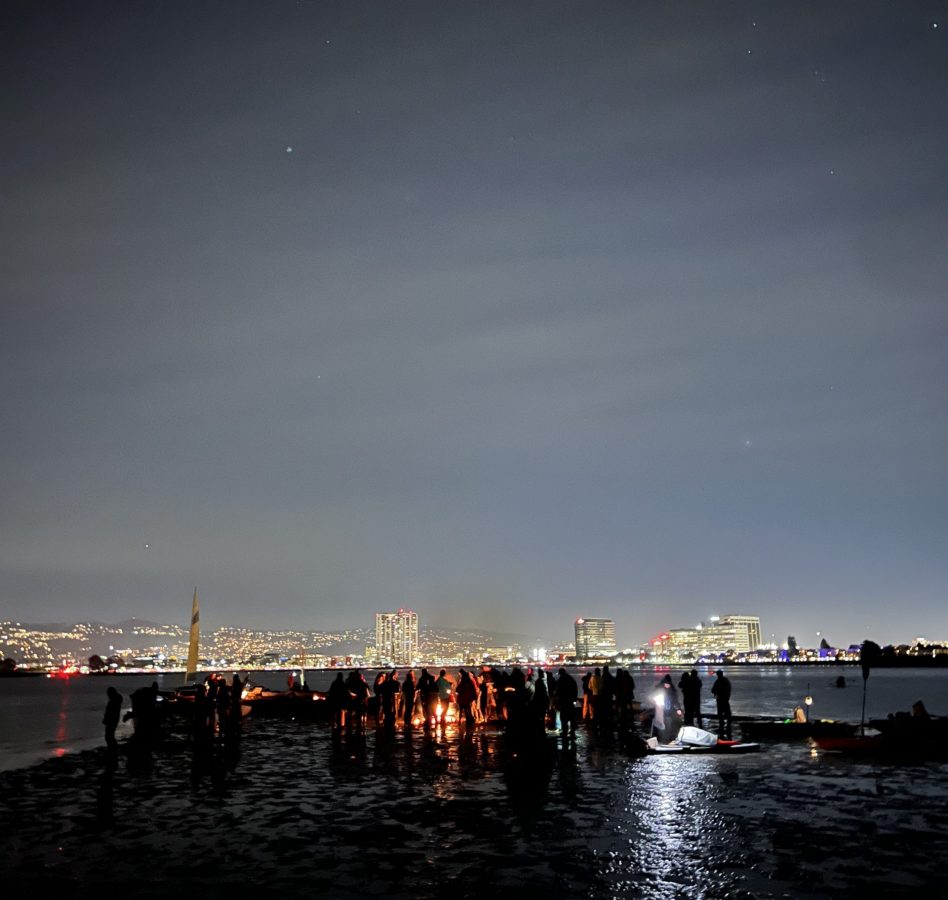
Ashby Shoal only appears at the lowest point of a king tide, which usually happens only a couple of times a year. While it may not be the longest-lasting party, as once the tide returns you’re going to get wet, it is certainly one of the most unique parties “in” the Bay.
Quality Yachts With Premium Service From Swiftsure Yachts
Swiftsure Yachts offers exceptional service, quality brokerage boats and new yachts for world cruising. Visit our website swiftsureyachts.com.
The Resourceful Sailor Makes Rigging Alignment a Top Priority
It’s been a little while since we had a DIY solution from The Resourceful Sailor, and we’re happy to have him back sharing his latest solution aboard his 1985 Pacific Seacraft Flicka 20, Sampaguita.
The Resourceful Sailor would like to thank Port Townsend Rigging (PTR) for assisting me with Sampaguita’s mast and rigging overhaul in 2021. Without their expertise, consultation, and kindness, it is hard to imagine having the incredibly satisfying and successful experience I did. They taught me so much it is impossible to write about the project without giving them a nod.
In reviewing photos of Sampaguita‘s masthead while working aloft on the tricolor, I noticed that the toggle and triangle plate connecting the masthead to the dual backstays were misaligned, awkwardly loading the clevis pin. The full backstays anchored to chainplates on each stern corner previously had marine eye terminals attaching directly to the masthead pin. When rerigging, the riggers and I added a toggle and triangle plate to improve alignment and articulation. The triangle plate is two plates, with 3/8-inch clevis pins through each corner, and meant to sandwich marine eye terminals. The crux of the problem was I only had eyes in two of the three pins. The top one, where it was attached to the masthead toggle, had nothing to keep the plates spread apart. They were sliding together and loading heavily on one side of the toggle. When installing, I failed to realize the need for a spacer between them.
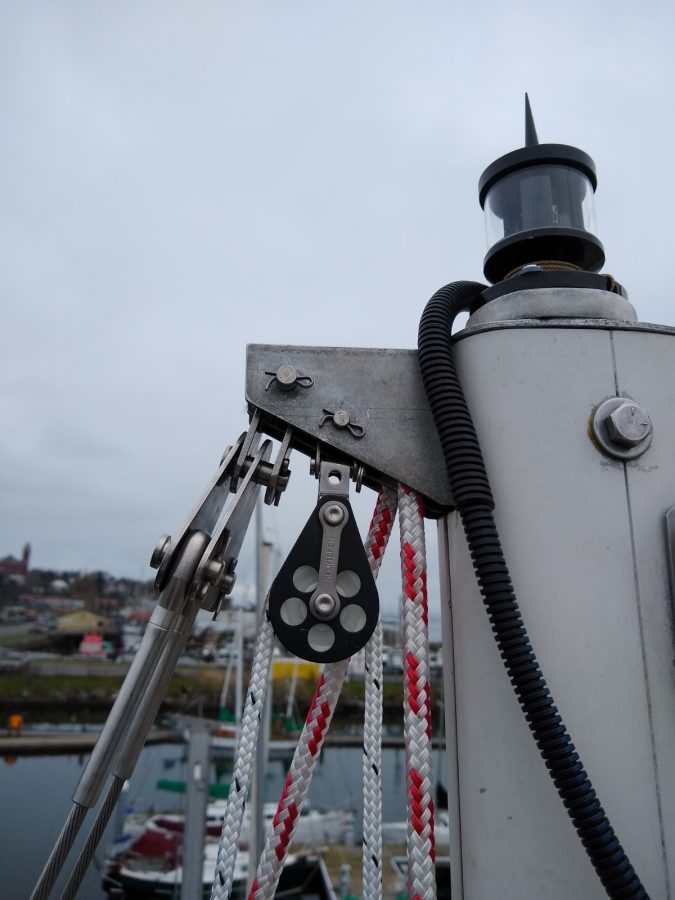
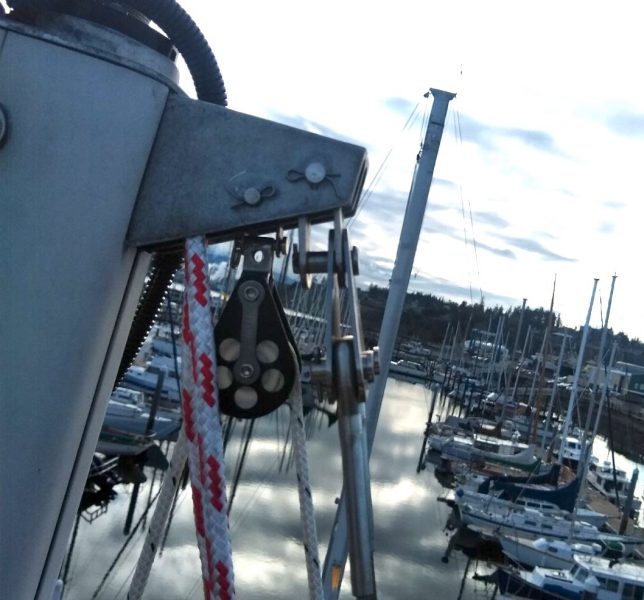
I made another trip to the top of the mast to inspect and suss what to do. There was no immediate danger, but it was unsatisfying and contradictory to my alignment efforts. Recollecting a conversation I’d had with the riggers regarding similar concerns at the chainplates (which I have done), it occurred to me I could make a spacer from some ½-inch StarBoard I had in the scrap bin. StarBoard is UV-resistant plastic, and very durable. A 1 1/4-inch hole saw on a hand drill made easy work of the initial disc. I enlarged the center hole to 3/8 inch, testing it with a clevis pin for a good fit. Finally, I used a hacksaw to trim it from ½-inch to 3/8-inch thick to fit the triangle plate.
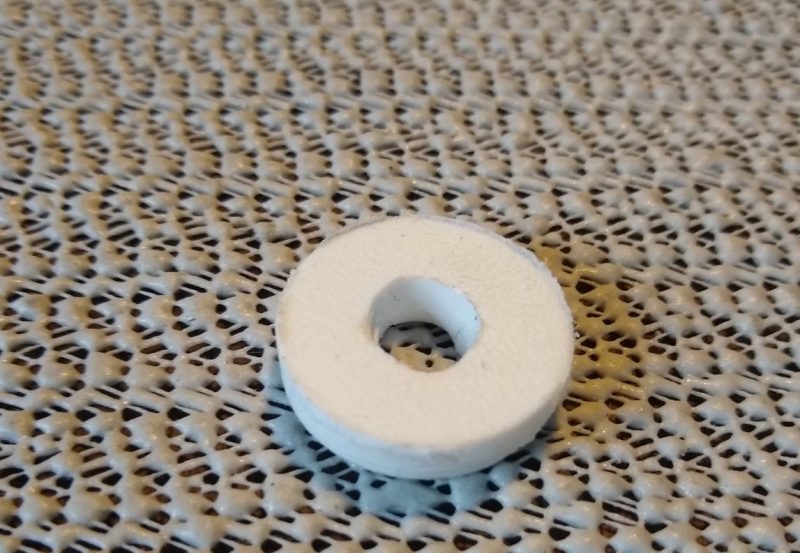
I preferred not to lower the mast to insert the spacer, so I planned to set up the two main halyards as backstays to the stern quarter cleats. The mainsheet/topping lift combination would also serve as a stay. I would then slacken the turnbuckles on the wire backstays, climb the mast, and use a bungee to support the triangle plate from the top, removing the load on the misaligned clevis pin. I would then remove the cotter pin, slide the clevis pin partially out, just enough to slip in the spacer, and fully return the clevis pin and cotter pin to the assembly. Simple, right?
I set up the Topclimber, a system used for singlehanded mast ascension, and filled my bosun bag with tools and rigging parts. I brought extra of everything I thought I might drop. On arrival at the top, I confirmed that the spacer was of adequate diameter and thickness. I set up the bungee, hooking one end to the triangle plate and one end over the mast to the spinnaker bail. In addition to countering the weight of the stays, it would prevent the whole assembly from crashing onto the deck. I pulled the cotter pin, but the clevis pin was still under some tension. I could ease it out, but as it disengaged from the toggle and triangle plate, I realized that the backstays were not slack enough. Shoot!
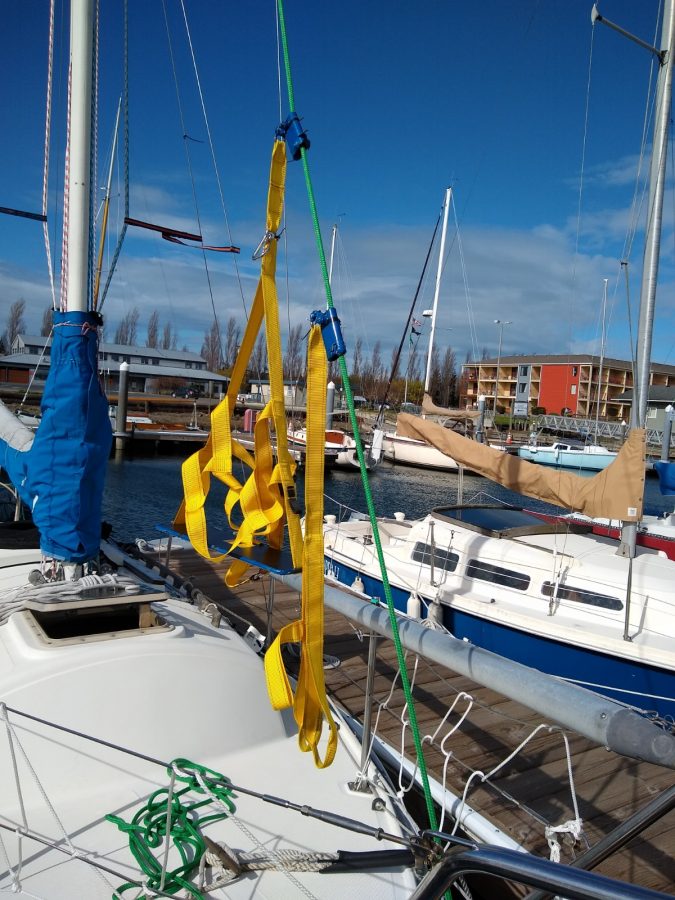
Since I was alone, I would need to descend, slacken the backstays more, and ascend again. I had been conservative when judging how loose to make them previously. Now that the temporary halyard stays had proven themselves, I had confidence in loosening the wire stays further.
Back at the top, I adjusted the bungee for better leverage, looping it around the tricolor with both hooks pulling up on the triangle plate. This better arrangement with the added slack countered the weight adequately, making the clevis pin easy to slide in and out.
I imagined and practiced how I would slip the spacer in without fully disengaging the pin and dropping either or both. I was concerned that if I completely removed the clevis pin, I would have trouble getting the assembly back together, making a mountain of a molehill. With my left hand reaching around the mast and holding the spacer against the clevis pin, I carefully eased it out with my right hand. The moment there was enough room, the spacer slid in, I lined up the holes, the pin went through, and the assembly went back together. I reinserted the cotter pin, shocked at how easily it all went together.
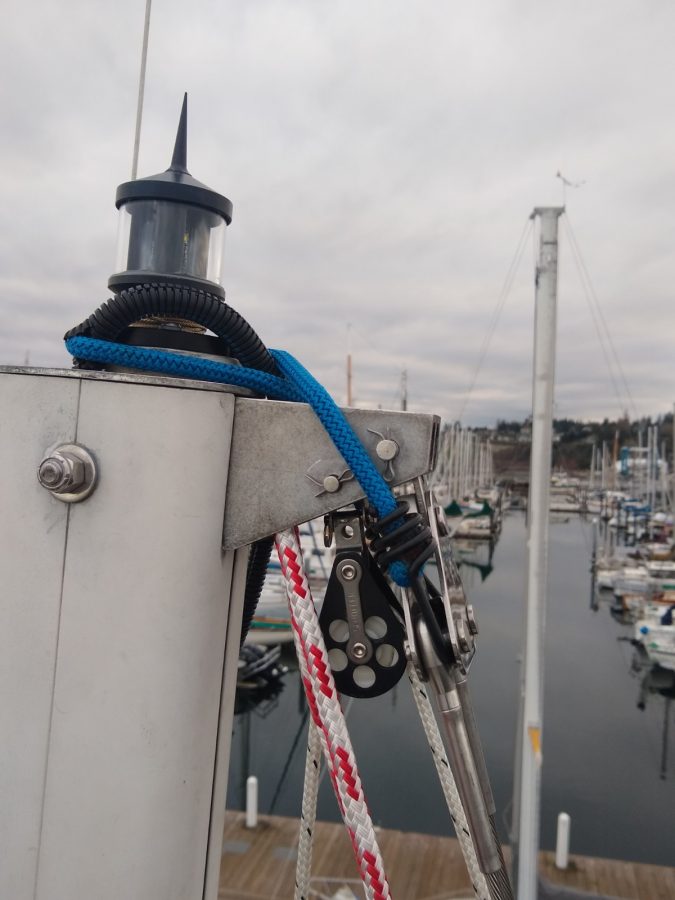
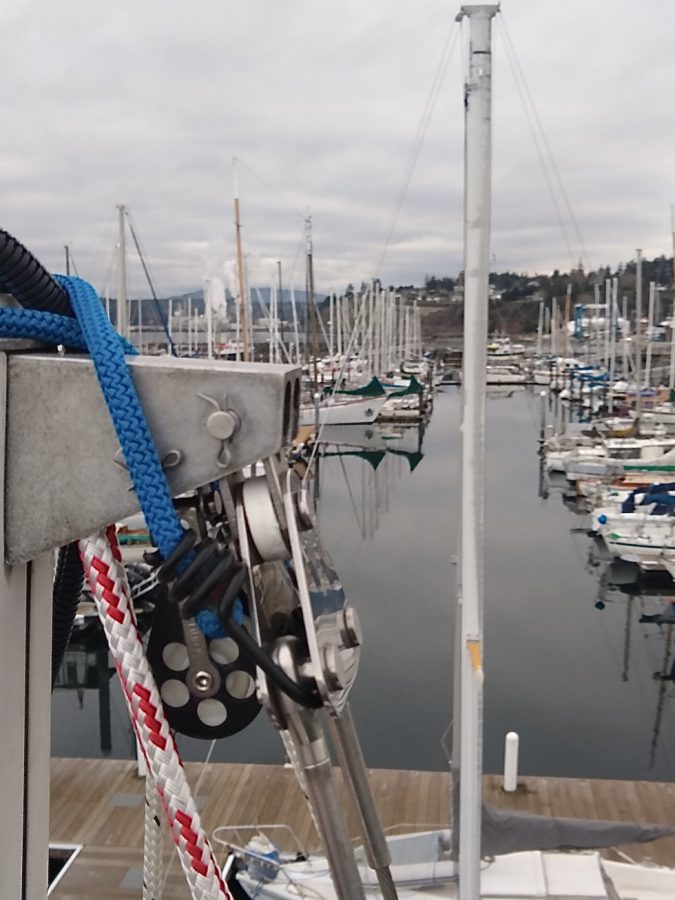
Preparation was 99% of the procedure. This write-up dismisses much of the stress involved, breezing over the learning curve at 31 feet, the physical exertion of climbing and reclimbing the mast, and not knowing if the theory was even possible to execute. Somehow, I managed not to drop any little (or big) bits. With the culmination of four trips up the mast, a recollected conversation, a tiny bit of StarBoard, and a heap of sweat equity, the assembly is much more satisfyingly aligned, and the triangle plate holds its proper design shape. Remember, keep your solutions prudent and safe, and have a blast.
You can read about The Resourceful Sailor’s previous DIY fix here.
The Inside Scoop on South Pacific Cruising
The vision of sailing from the West Coast of the Americas to the South Pacific is one of the most captivating dreams of cruising, and also a major undertaking. It’s the course to the Southern Cross followed by the recently deceased singer/songwriter/sailor David Crosby aboard his wooden schooner Mayan. Once you arrive, there are literally hundreds of alluring tropical isles that you might explore.
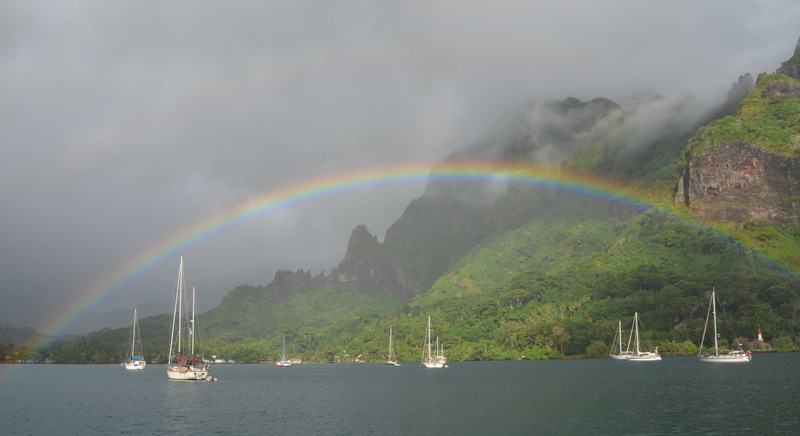
This week a team of South Pacific cruising experts will offer a wealth of local knowledge and personal insights on sailing the Pacific Puddle Jump to this vast region, during three South Pacific Bon Voyage events in Panama and Mexico. A joint effort between the Pacific Puddle Jump rally and the South Pacific Sailing Network — with support from Latitude 38 — these (free) highly informative three-hour seminars will include up-to-date information on making the Pacific Puddle Jump passage, as well as cruising French Polynesia, Tonga, Fiji, New Zealand and the Galápagos.
Panama events at Shelter Bay Marina.
• Jan 27, 10 a.m.–1 p.m.
• Jan 28, 10 a.m.–1p.m.
Mexico event at Vallarta Yacht Club, at Paradise Village Marina, Nuevo Vallarta.
• Jan 30, 4–7 p.m.
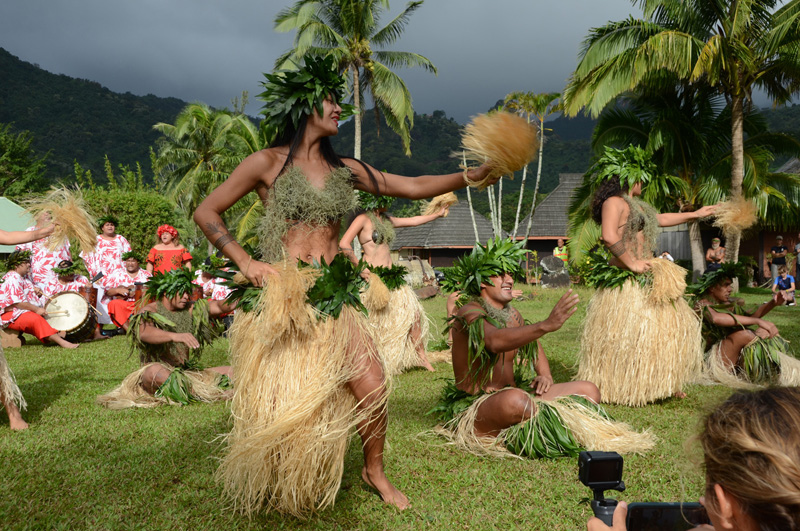
If you are in either area, we encourage you to attend. All interested sailors will be welcome.
Westwind Yacht Management — Washing, Waxing and Varnishing
Westwind Yacht Management: Premiere Yacht & Fleet services for the San Francisco Bay Area.

